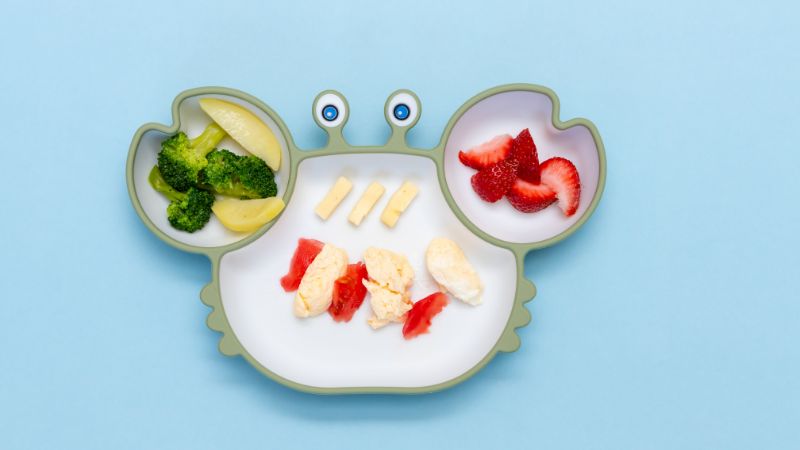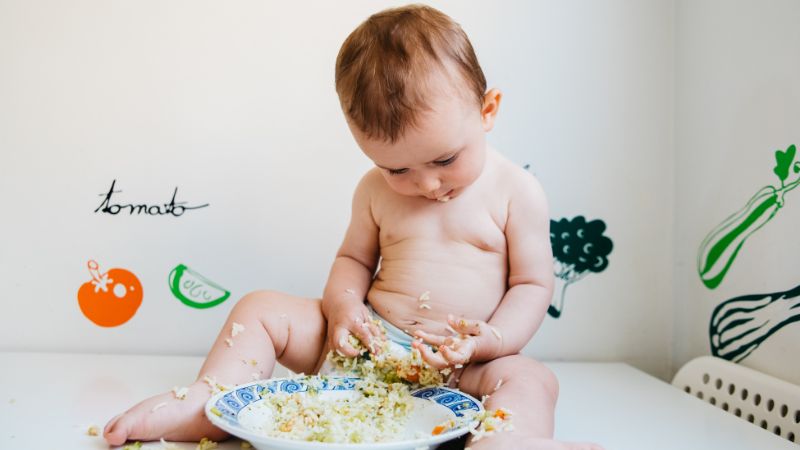Baby Led Weaning – BLW is one of the methods that many people apply to infants. This method allows babies to decide their own food, how to eat, and the amount of food they want. In addition, BLW encourages babies to chew before swallowing.
However, when implementing this method, breastfeeding mothers often encounter some mistakes that may not achieve the desired results. Let’s find out what these mistakes are and how to avoid them!
1 Choosing the wrong time to introduce solid foods
Choosing the wrong time to introduce solid foods to babies can prevent this method from achieving the desired results. When babies start solid foods too early, it is difficult for them to adapt and can affect their fragile digestive system. On the other hand, introducing solid foods too late can miss the period when babies feel interested, making them more irritable and less receptive.
Furthermore, late introduction of solid foods can put babies at risk of malnutrition and immune system decline, making them grow slower in terms of weight and height compared to their peers.
 Choosing the wrong time to introduce solid foods
Choosing the wrong time to introduce solid foods
2 Choosing the wrong foods
Some inexperienced parents may provide inappropriate foods for their baby’s age. Specifically, this could include wrong portion sizes or choosing foods that are too hard for the baby to consume.
Others may overfeed the baby during the introduction of solid foods, thinking that more food means better, but in reality, the quantity may not be enough for the baby to absorb and develop.
 Choosing the wrong foods
Choosing the wrong foods
3 Obsession with cleanliness
Adults always want children to eat clean food, so they are always ready to clean up any dropped food, wipe the baby’s mouth and face when they get dirty. Some parents even hold the food and spoon-feed the baby because they are afraid that the baby’s hands will get dirty.
However, this can limit the baby’s learning experience, affecting their perception of food, such as touching different textures, smelling the aroma of the food, and learning how to eat with their hands and mouth.
 Obsession with cleanliness
Obsession with cleanliness
4 Pressure on quantity
Many parents believe that their child is eating too little and, as a result, they force their child to eat more because they fear their child will be hungry or lack nutrients. Therefore, parents prepare meals that are too large in portion size and force the child to finish them even if it is not suitable for their age.
Parents should understand that each child’s temperament and appetite is different, and while some children may eat more than others, it is not always the case. It is not advisable to force a child to eat beyond their capacity.
 Pressure on quantity
Pressure on quantity
5 Abandoning the baby
Some parents stay too close and take care of their child excessively, but some misunderstand the BLW method as leaving the baby to fend for themselves without any support, even when the baby is choking, gagging, or crying.
The best approach is for parents to act as role models, guide the baby to independently feed themselves by placing food in their hand and then putting it in their mouth. After that, parents can let the baby feed themselves and observe them during the meal with other family members and provide assistance when necessary.
 Abandoning the baby
Abandoning the baby
Above are 5 common mistakes when parents apply the baby-led weaning method. We hope that these pieces of information will help parents know how to introduce solid foods to their babies correctly.
Source: Báo Trí thức trẻ






























